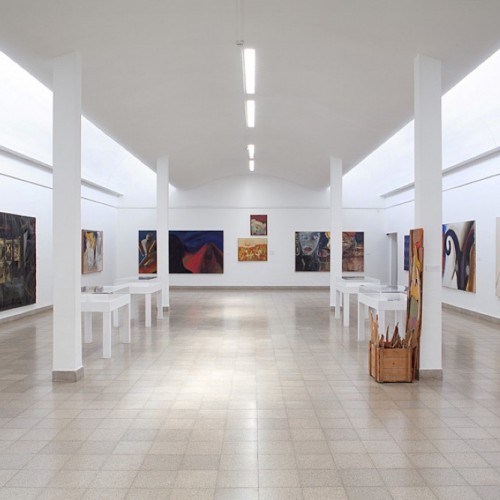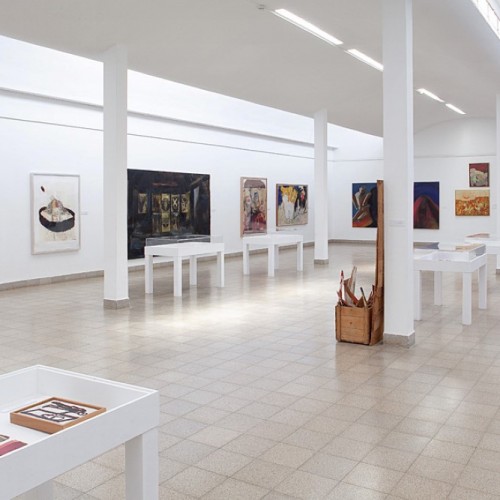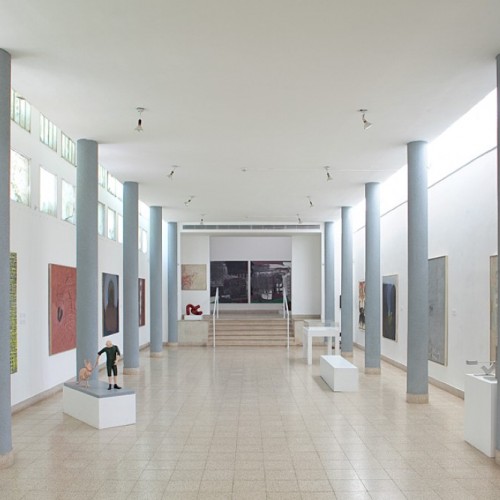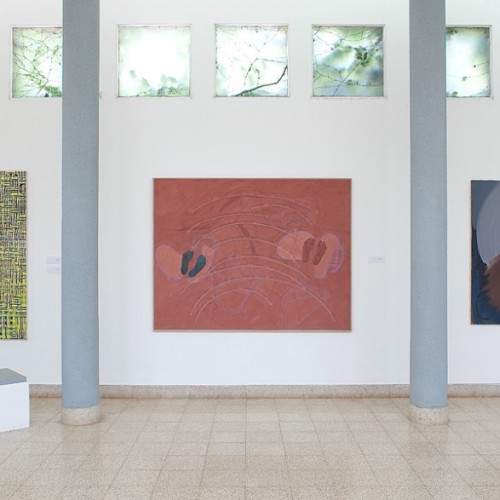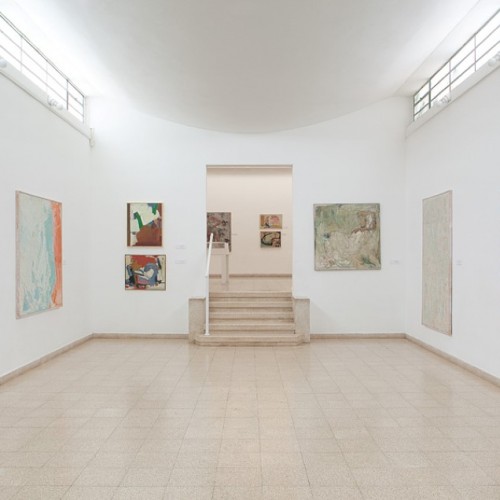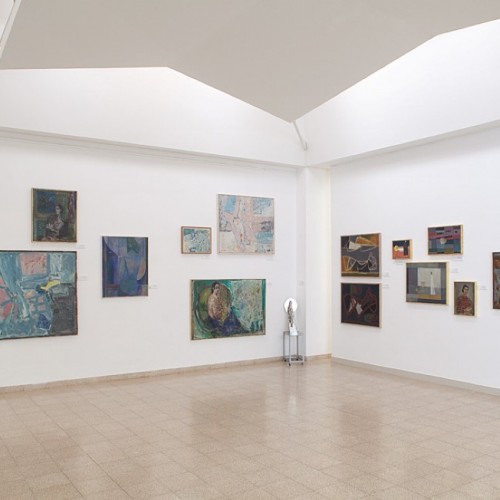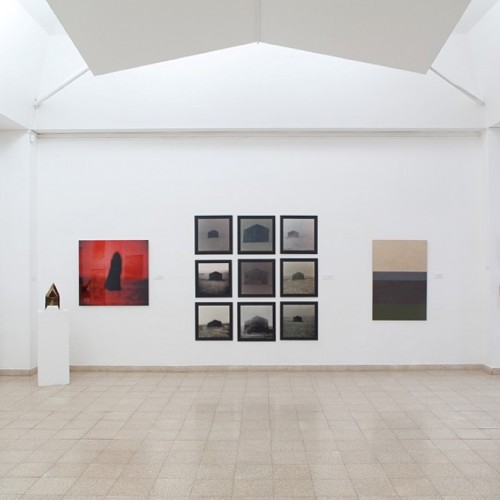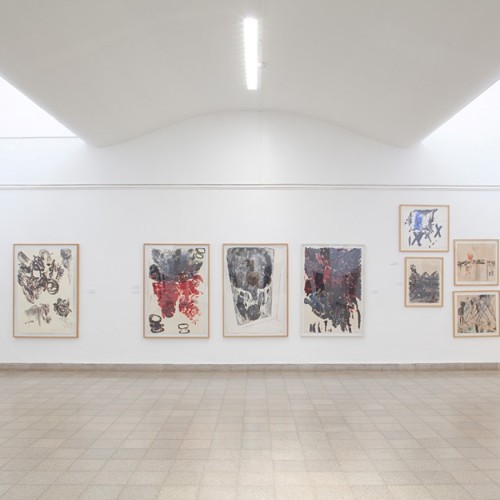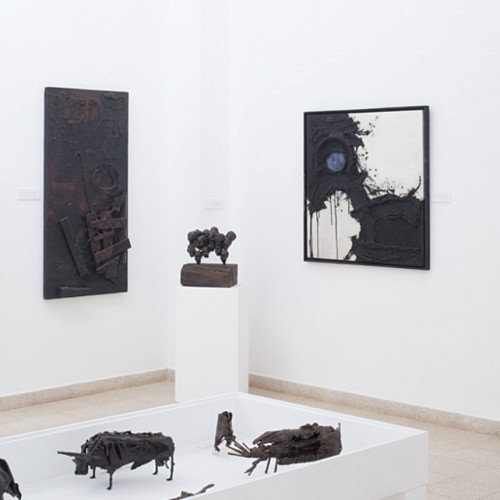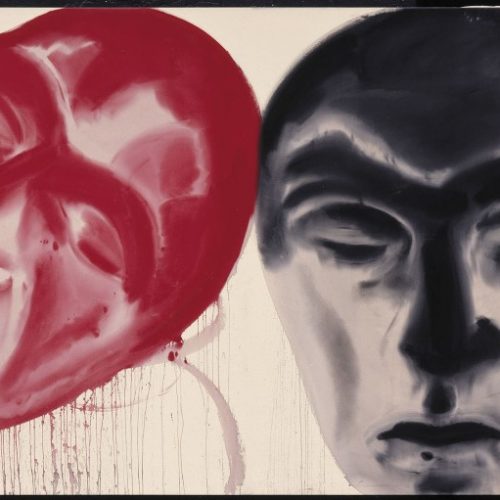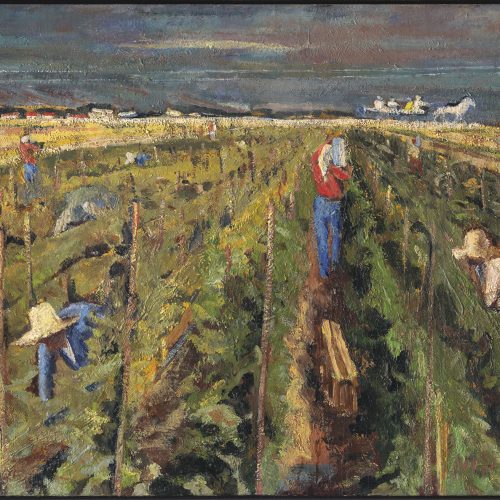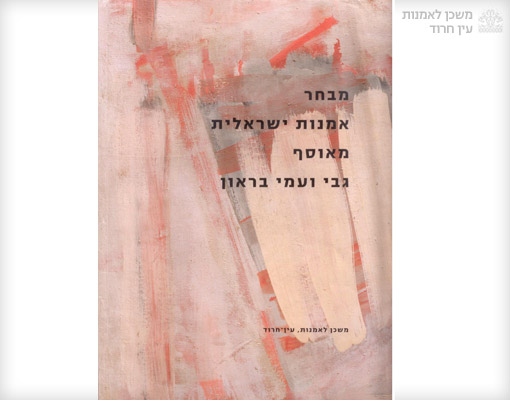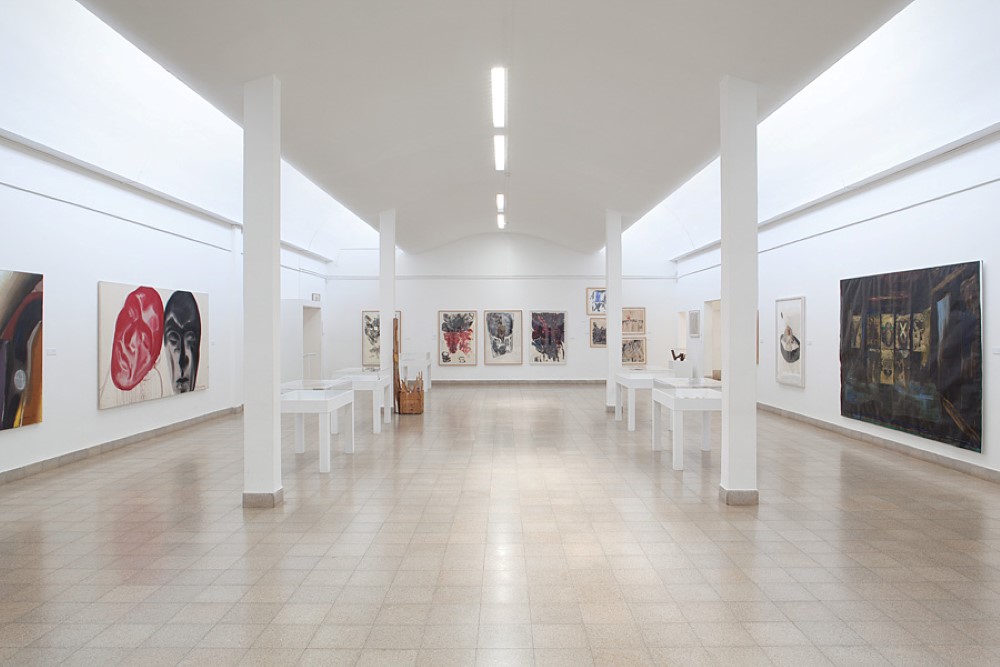
The exhibition “A Selection of Israeli Art from the Collection of Gaby and Ami Brown” will be shown at the Museum of Art, Ein Harod from October 2009 through May 2010 (no closing date has been announced) and will extend throughout all the levels of the Museum (the Judaica wing excepted). The exhibition comprises some 300 works of painting, sculpture, photography and drawing by Israeli artists, from the early 1920s through to the first decade of the 21st century,
Accompanying the exhibition is a book (380 color pages, Hebrew and English) that contains two essays. “On Collecting and Collectors” discusses the phenomenon of collecting and its characteristics, on the background of additional collections of the Browns that are not represented in this exhibition – for example, anti-Semitic “works” (posters, postcards, and figurines), Damascene works by Jewish artists from Syria, rare books in Yiddish, Hebrew, and other languages, carpets, jewelry, printed works and craft works from pre-State Israel, etc. The other essay, “Remarks on the Collection of Israeli Art” casts light on distinctive orientations of the collection of Israeli art. The author of the essays is Galia Bar Or, curator of the exhibition and editor of the book, and the book’s designer is Michael Gordon.
Besides artists who were widely recognized (such as Yosef Zaritsky and Arieh Aroch) and are well represented in it, the collection also contains significant bodies of work that have received only minimal exposure in the exhibitions and collections of the major museums. These include oeuvres of artists who belonged to the “New Horizons” group but whose work challenged the group’s dominant line, such as Yehiel Krize and Aharon Kahana. Also represented in the exhibition are key artists who developed independent directions in Israeli art, such as Shalom Sebba, the selection of whose works in the collection is the largest and most comprehensive in Israel.
Also represented in the exhibition are some turning points in Israeli art, like the turn to the human body in the painting of the ’60s, in the early paintings of Uri Lifshitz, Yair Garbuz and Michael Druks. Other important groupings include works by Gabriel Klasmer, Moshe Gershuni, Joshua Borkovsky, Ido Bar-El and others.
This capacious exhibition, in the well-lit galleries of the Museum of Art, Ein Harod, offers a first exposure of one of the most extensive and high-quality Israeli collections in this country, and offers an opportunity for a fresh and fascinating encounter with Israeli art since its beginnings.
Events and symposiums will be advertised on the Museum’s website.


